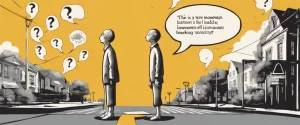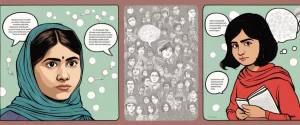
In the vast realm of literature, there exist timeless classics that have left an indelible mark on the literary landscape. Two such masterpieces, Of Mice and Men by John Steinbeck and Oliver Twist by Charles Dickens, stand as pillars of their respective eras, reflecting the socio-economic conditions and the human struggle against adversity. Through poignant narratives and vivid characterizations, both authors delve deep into the human condition, shedding light on the profound complexities of society and the indomitable spirit of individuals. As we embark on this comparative study, we shall explore the striking similarities and differences between these two literary works, seeking to unravel the shared themes of segregation, poverty, and the relentless search for companionship while examining the distinct ways in which Steinbeck and Dickens approach these quintessential aspects of human existence.
Brief Summary of Two Books
Of Mice and Men by John Steinbeck
Of Mice and Men is a novella written by John Steinbeck, published in 1937. The story is set during the Great Depression in California and follows two protagonists, George Milton and Lennie Small, who are migrant ranch workers.
George is a small but intelligent man, while Lennie is a large, simple-minded individual with tremendous physical strength. The two have a unique relationship, as George serves as Lennie’s protector and caregiver due to his mental limitations. They have dreams of owning their own piece of land, living off the fat of the land and being free from the hardships of their transient lifestyle.
The story unfolds as George and Lennie arrive at a new ranch where they meet various characters, including Candy, an old swamper, and Curley, the boss’s aggressive and insecure son. Lennie, despite his gentle nature, often unintentionally causes trouble due to his size and lack of awareness. This leads to conflicts and tensions among the other ranch workers, particularly with Curley and his flirtatious wife.
Throughout the novella, Steinbeck explores themes of friendship, dreams, loneliness, and the inherent cruelty of human nature. The narrative culminates in a tragic event that forever alters the lives of George and Lennie and challenges the possibility of their dreams becoming a reality.
Of Mice and Men is a powerful and poignant story that reflects the harsh realities of a time plagued by economic hardship, exploring themes of friendship, societal isolation, and the search for a better life. Steinbeck’s vivid description, memorable characters, and exploration of profound human emotions make this a classic work of American literature.
Oliver Twist by Charles Dickens
Oliver Twist by Charles Dickens is a classic Victorian novel that tells the story of a young orphan boy named Oliver Twist. The story begins with Oliver being born in a workhouse in England and follows his journey through various hardships and adventures.
Oliver is raised in the workhouse and endures a difficult childhood filled with neglect and abuse. When he turns nine, he is sent to an apprenticeship with an undertaker, but runs away after being mistreated. Oliver then finds himself in London, where he encounters a group of impoverished children led by a boy named the Artful Dodger.
The Dodger introduces Oliver to Fagin, a sinister old man who trains orphaned children to become pickpockets. Oliver instinctively rebels against this life of crime, despite Fagin’s attempts to manipulate and control him. Eventually, Oliver is framed for a theft by his fellow thieves and is taken in by Mr. Brownlow, a kind-hearted gentleman who believes in his innocence.
Oliver flourishes under Mr. Brownlow’s care, but his previous criminal associates, including Fagin and the brutal Bill Sikes, conspire to bring him back into their world. They kidnap Oliver and force him to participate in their criminal activities, culminating in a botched burglary.
Throughout the story, Oliver encounters a cast of colorful characters, some helpful and others malicious. He forms friendships with individuals like Nancy, a sympathetic young woman trapped in a life of crime, and Rose Maylie, a young woman whose true identity is later revealed. These relationships provide opportunities for Oliver to experience kindness and compassion amidst the harsh realities of Victorian society.
As the novel progresses, Oliver’s true lineage is revealed, uncovering a complex web of secrets and long-lost family connections. Ultimately, Oliver’s goodness and innocence prevail, leading to his rescue and the downfall of the criminal underworld he was once entangled with.
Oliver Twist exposes the brutal realities faced by the marginalized members of society during the Victorian era, particularly children and orphans. Charles Dickens tackles themes of poverty, social injustice, and the corrupting influence of greed. The book highlights the importance of compassion, morality, and the power of goodness in the face of adversity.
Comparison between Two Books

Similarities in reality
Both Of Mice and Men by John Steinbeck and Oliver Twist by Charles Dickens share similarities in their depiction of reality, particularly in their portrayal of the marginalized and disadvantaged individuals who are caught in the hardships of society.
1. Social Injustice: Both novels shed light on the social injustices prevalent in their respective time periods. Of Mice and Men exposes the exploitative and harsh conditions faced by itinerant workers during the Great Depression. Similarly, Oliver Twist presents the injustices faced by orphans and the poor in Victorian England, where they suffer at the hands of oppressive workhouses and criminals.
2. Poverty and Living Conditions: Both novels provide vivid descriptions of the destitution faced by their characters. Of Mice and Men vividly portrays the poverty-stricken lives of ranch workers, living in cramped quarters and struggling to make ends meet. Oliver Twist likewise showcases the squalid conditions experienced by orphaned children and the impoverished, often living in overcrowded workhouses or slums.
3. Loneliness and Isolation: The characters in both novels experience profound feelings of loneliness and isolation due to their marginalization. In Of Mice and Men, characters like George and Lennie yearn for companionship in a world where few understand them, while Oliver Twist constantly seeks emotional connection in a society that devalues him as an orphan.
4. Limited Opportunities: The protagonists in both novels face limited opportunities for personal and societal advancement. In Of Mice and Men, the dream of owning a small piece of land becomes an unattainable goal for George and Lennie, illustrating the restricted opportunities available to the marginalized. Similarly, Oliver Twist’s search for a better life is obstructed by the constraints of social status and the corrupt nature of society.
5. Cruelty and Exploitation: Both novels reveal the callousness and exploitation suffered by the disadvantaged characters. Of Mice and Men portrays the ruthless treatment of ranch workers by their employers, who often prioritize profits over the well-being of their employees. Oliver Twist, on the other hand, exposes the cruelty of institutions like workhouses and criminal gangs, who take advantage of the vulnerable members of society for their own gain.
Overall, both Of Mice and Men and Oliver Twist demonstrate the harsh realities faced by individuals marginalized by society, whether they be itinerant workers during the Great Depression or orphans in Victorian England. The novels expose the social injustices, poverty, isolation, limited opportunities, and cruelty that characterize these characters’ lives, highlighting the shared experiences of individuals living on the fringes of society.
Divergences in reality
Of Mice and Men by John Steinbeck and Oliver Twist by Charles Dickens are both classic works of literature that explore themes of poverty, social injustice, and the human condition. While they may share similar themes, there are notable divergences in the way these books depict reality.
Firstly, the setting in Of Mice and Men is the rural landscapes of California during the Great Depression, while Oliver Twist takes place in the bustling streets of Victorian-era London. Steinbeck paints a gritty and realistic picture of the harsh conditions faced by itinerant workers, highlighting the desperation and isolation of the characters. On the other hand, Dickens presents a more dramatized portrayal of London’s underbelly, with Oliver experiencing a series of coincidental encounters and unlikely friendships that allow him to escape the worst of his circumstances.
Another divergence lies in the characterization of the protagonists. In Of Mice and Men, George and Lennie are complex and well-rounded characters. Steinbeck delves deeply into their motivations, dreams, and flaws, creating multidimensional individuals with conflicting desires. Conversely, Dickens often utilizes caricature-like characters in Oliver Twist, with exaggerated traits and predictable behaviors, such as the cruel and heartless Fagin or the virtuous and kind Nancy. This approach allows Dickens to provide larger social commentary but limits the complexity of his characters.
Moreover, the tone of the two novels differs significantly. Of Mice and Men exhibits a somber and melancholic tone, reflecting the despair and hopelessness of the Great Depression. Steinbeck explores themes of powerlessness and the impossibility of achieving the American Dream in such harsh conditions. In contrast, Oliver Twist, while dealing with grave subjects like child exploitation and poverty, has moments of lightness and humor. Dickens frequently uses satire and irony to criticize society, and his comedic elements provide a balance to the darker themes of the novel.
Furthermore, the narrative style of each book contributes to the divergence in reality. Steinbeck employs simple, direct prose that mirrors the straightforward lives and limited opportunities of the characters. Conversely, Dickens showcases his mastery of vivid and elaborate descriptions, creating a rich and immersive world. His intricate storytelling and intricate detail convey a sense of exaggeration and a heightened reality, allowing readers to be transported to Dickensian London.
In conclusion, while Of Mice and Men and Oliver Twist share similar themes of poverty and social inequality, they diverge in their depiction of reality. Steinbeck presents a raw and authentic portrayal of the Great Depression in rural America, focusing on complex characters and exploring the harsh realities of the time. In contrast, Dickens uses exaggerated characters and a more dramatic narrative style to critique Victorian society, resulting in a more exaggerated and symbolic representation of reality.

Conclusion
Both “Of Mice and Men” by John Steinbeck and “Oliver Twist” by Charles Dickens are considered literary classics with enduring popularity.
John Steinbeck’s “Of Mice and Men” tells the story of two friends, George and Lennie, who navigate the challenges of the Great Depression through their dreams of owning a piece of land. It explores themes of friendship, marginalized individuals, and the inherent injustices in society.
Charles Dickens’ “Oliver Twist” follows the life of an orphan named Oliver, who faces numerous hardships and abuses in Victorian England. The novel highlights themes of social inequality, poverty, and corruption, while also showcasing Dickens’ skill for vivid characterization and realistic portrayals of societal issues.
Ultimately, the choice of which book is more worthy of reading will depend on personal preferences, interests, and the themes that resonate with an individual reader. Both novels offer valuable insights into historical and social contexts, as well as thought-provoking narratives.


